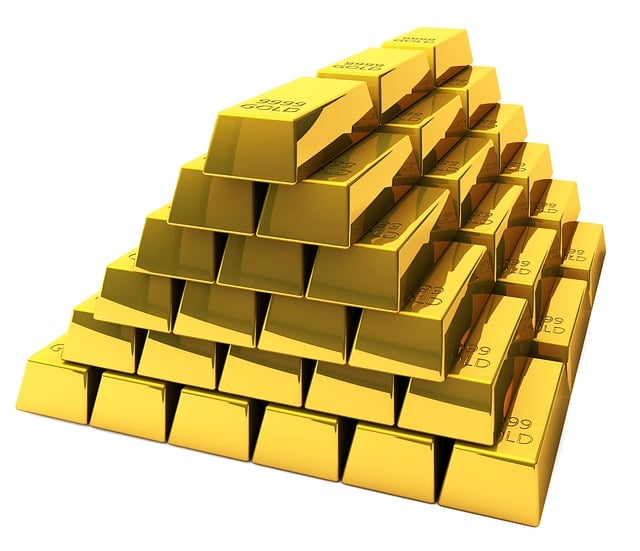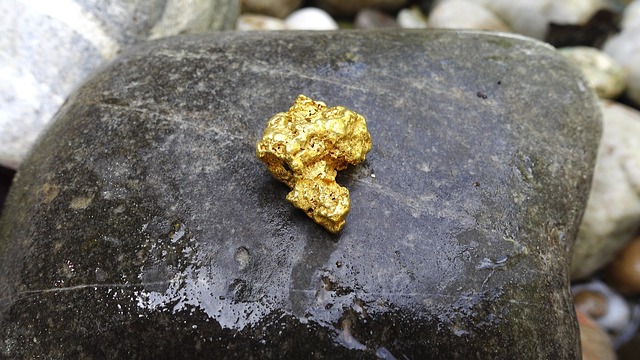
Legacy precious metals, including gold, silver, platinum, and palladium, have consistently demonstrated their value as integral components of wealth preservation strategies, with a historical significance that transcends their economic utility. These metals have been central to financial stability across ancient economies to modern-day investment portfolios, offering protection against inflation and economic downturns. Legacy precious metals reviews affirm their enduring worth as heirlooms, investments, and hedges against currency devaluation over time. Their industrial applications, particularly in technology and automotive sectors, complement their role as 'safe-haven' assets, with gold being a traditional stronghold for long-term value preservation. Silver offers growth potential during economic expansions, while platinum and palladium benefit from their scarcity and essential roles in critical industries. Investors considering legacy precious metals should review these assets to understand their market performance and long-term viability, ensuring a well-informed investment decision that aligns with their financial goals and legacy aspirations. These reviews help investors navigate the authenticity, purity, and economic factors influencing precious metal prices, emphasizing the importance of diversification for portfolio stability and risk mitigation. Legacy precious metals are thus recommended as a prudent addition to diversified investment plans, balancing security with growth prospects for long-term financial security.
Exploring the enduring role of precious metals in wealth preservation, this comprehensive guide delves into the niche realm of legacy precious metals. From their historical importance to modern diversification strategies, understand the significance of gold, silver, platinum, and palladium within a financial portfolio. This article dissects the intricacies of investing in these assets, including grading, purity, and the coins versus bars debate. Learn the essentials of acquiring, storing, and legally owning these metals, while also navigating market trends that influence their values. For prospective investors, this guide will equip you with the knowledge to evaluate legacy precious metals reviews and anticipate future roles in financial planning. With case studies, risk assessments, and preservation tips, ensure your investment strategy is robust and informed.
- The Historical Significance of Precious Metals in Wealth Portfolios
- What Constitutes Legacy Precious Metals?
- Types of Legacy Precious Metals: Gold, Silver, Platinum, and Palladium
- The Role of Legacy Precious Metals in Diversification Strategies
The Historical Significance of Precious Metals in Wealth Portfolios

Throughout history, precious metals have held a revered place in wealth portfolios, serving as both a store of value and a medium of exchange. Their luster and rarity have made them the cornerstone of economic systems for millennia, with gold and silver often at the forefront of financial stability and prosperity. The historical significance of these metals is evident in ancient civilizations, where they were used to craft coins and artifacts that bore the weight of economic transactions and cultural importance. As societies evolved, so did the roles of precious metals, which not only symbolized wealth but also served as a hedge against inflation and economic uncertainty.
Legacy precious metals, with their enduring value, have consistently been passed down through generations, often featuring in family heirlooms and investment portfolios. Reviews on legacy precious metals investments highlight their role as a financial legacy, offering a tangible asset that can protect against the erosive effects of time, such as inflation and market volatility. The historical context underscores the reliability of these assets, which have consistently proven their worth across various economic climates. Investors looking to understand the impact of precious metals on long-term wealth strategies will find that the legacy of these commodities is not just a historical footnote but a prudent component of diversified investment portfolios even in contemporary times.
What Constitutes Legacy Precious Metals?

Legacy precious metals encompass a selection of time-honored investments that have been coveted for their durability, rarity, and intrinsic value throughout history. These metals typically include gold, silver, platinum, and palladium, each with its unique characteristics and historical significance. Gold, often regarded as the safest of investments due to its ‘safe-haven’ status, has been a store of value for millennia. Silver follows closely, known for its industrial applications and numismatic appeal. Platinum and palladium, while less common, are also valued for their industrial uses and investment potential. Legacy precious metals reviews provide insight into the authenticity, purity, and historical performance of these metals, offering investors a glimpse into their longevity as part of a wealth preservation strategy. Investors looking to include legacy precious metals in their portfolio should consider factors such as the metal’s condition, storage options, and the reputation of the dealer from whom they are purchasing. These reviews can be instrumental in navigating the market for legacy precious metals, ensuring that investors make informed decisions aligned with their financial objectives and legacy planning.
Types of Legacy Precious Metals: Gold, Silver, Platinum, and Palladium

Legacy Precious Metals offers investors a diverse array of investment options in the form of gold, silver, platinum, and palladium. Each of these metals plays a unique role within a portfolio, contributing to its overall stability and growth potential. Gold, often regarded as a safe-haven asset, has been sought after for its ability to retain value over time, making it an ideal component in a legacy wealth strategy. Silver, with its industrial and ornamental uses, often outperforms gold in bull markets, offering significant returns when economic conditions are favorable. Platinum, rarer than both gold and silver, is revered for its durability and has a strong demand in the automotive industry, which can drive its value. Lastly, palladium, primarily used in electronics and autocatalysts, has become increasingly valuable due to its scarcity and essential role in modern technology. Investors looking into Legacy Precious Metals reviews will find that these metals are not just passive holdings; they are dynamic elements that respond to global economic trends, market demand, and geopolitical shifts. As such, including them in an investment portfolio can provide a balance of security and growth opportunities, with the potential to preserve and enhance legacy wealth over time.
The Role of Legacy Precious Metals in Diversification Strategies

Incorporating Legacy Precious Metals into diversification strategies can be a prudent move for investors seeking to mitigate risk and enhance portfolio resilience. These metals, which include gold, silver, platinum, and palladium, have historically served as a hedge against inflation and economic uncertainty. Their value often moves independently of paper assets, offering a counterbalance to market volatility. Legacy Precious Metals, with their track record and reputation in the industry, provide investors with confidence in the authenticity and purity of their holdings. Reviews from seasoned investors frequently highlight the role these metals play in safeguarding wealth over time, as they are not subject to the same fluctuations as stocks or bonds. By including a portion of one’s investment portfolio in legacy precious metals, individuals can effectively diversify their assets, potentially reducing overall risk and improving the likelihood of achieving long-term financial objectives.
When considering Legacy Precious Metals for diversification, it is crucial to assess not only their historical performance but also how they align with your individual investment goals and risk tolerance. Legacy Precious Metals reviews can offer insights into customer experiences with storage, liquidity, and the purchasing process, which are all important factors when integrating these metals into an investment strategy. Additionally, understanding the economic indicators that drive precious metal prices can inform decision-making processes for including these assets in one’s portfolio. This due diligence ensures that investors make informed choices that complement their broader financial plans and leverage the protective benefits of legacy precious metals as part of a comprehensive diversification approach.
Legacy precious metals have long played a pivotal role in wealth preservation and diversification, serving as a reliable hedge against inflation and market volatility. This comprehensive guide has illuminated their historical significance, defined what constitutes legacy precious metals, and explored the specific attributes of gold, silver, platinum, and palladium. By understanding their place within diversification strategies, investors can make informed decisions that align with their long-term financial goals. As the conversation around wealth management evolves, legacy precious metals continue to garner attention, as reflected in numerous legacy precious metals reviews. For those seeking to incorporate these tangible assets into their portfolio, this guide serves as an invaluable resource, offering clarity and insight into a world that has consistently demonstrated its worth over the centuries.







